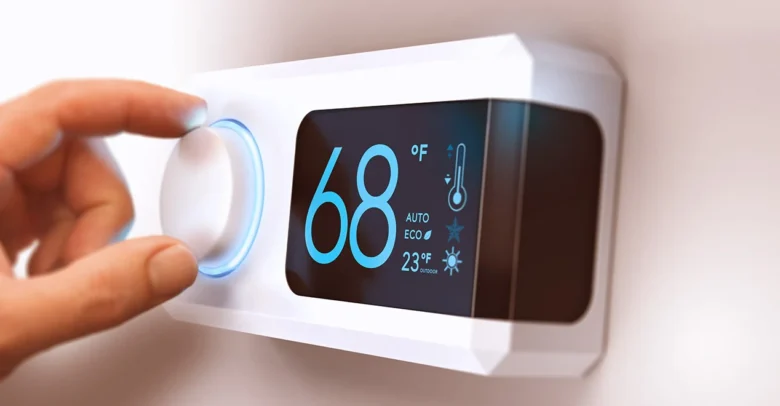It can be a challenge to keep your home comfortable while not racking up huge energy bills. Homeowners are constantly looking for ways to save energy, for both environmental reasons and cost savings. Smart thermostats are one of the best tools to achieve this. This simple device automates your home’s heating, cooling, and lighting. It can save you money and energy. This article will explain smart thermostats, their energy-saving benefits, and what to consider before buying.
Smart Thermostats: What you need to know
Smart thermostats are Wi-Fi-enabled devices that control your HVAC system. Smart thermostats are more intelligent than traditional thermostats, which require manual adjustments. They learn your daily routines as well as your temperature preferences. The thermostats can create a schedule that will only heat or cool the home when it is necessary. They also let you monitor and control the temperature of your home remotely via a smartphone or tablet. These thermostats offer a higher level of automation and control than programmable ones, which follow only a set schedule.
Energy-Saving Benefits
Smart thermostats are able to reduce energy consumption. The traditional thermostats can lead to excessive heating or cooling when you are away or asleep. Smart thermostats can learn your schedule to adjust the temperature. For instance, it can lower the temperature while you’re at work and warm the house when you get home. Geofencing is used by some models to detect when a smartphone leaves or enters an area around your house, which triggers temperature adjustments. Manufacturers like Nest claim that a smart thermostat can reduce heating and cooling costs by 10% to 15% for homeowners.
Features and Functions
Smart thermostats are packed with features that maximize comfort and efficiency. Many smart thermostats provide detailed reports on energy consumption, which show you when and where you use the most energy. You can use these data to identify patterns and make more informed decisions about your energy consumption. Remote access is another useful feature that allows you to adjust the temperature of your home from anywhere. You can update the thermostat settings instantly if you are going on vacation or coming home early. Some advanced models integrate with smart home devices like voice assistants, such as Amazon Alexa and Google Assistant. This feature allows you to control temperature by simply speaking.
Installation and Setup
Many homeowners are able to install a smart thermostat themselves. The majority of devices include detailed instructions and all necessary hardware. Basic steps include turning off your HVAC system’s power, removing the old thermostat, and connecting wires to the smart thermostat baseplate. HVAC systems may have complicated wiring. It’s best to hire an electrician or HVAC technician if you are not confident with electrical work. This will guarantee a safe and correct installation. Installing the device requires connecting it to your WiFi network and then configuring its preferences via its mobile app.
Cost Savings and ROI
Smart thermostats are more expensive upfront than conventional models. However, the energy savings they provide will pay for them over time. Return on Investment (ROI), which is a measure of return on investment, depends on factors such as your local climate, the insulation in your home, and your electricity rates. A smart thermostat will pay for itself on average in two to three years. Most utility companies offer rebates and discounts on energy-efficient products like smart thermostats. These incentives can help further reduce payback time. You can save money each month by improving the efficiency of your heating and cooling system. Such improvements will also increase the value of your property.
The Smarter Way to Manage your Home
Smart thermostats are a simple and powerful way to manage your home’s energy consumption more efficiently. They reduce energy waste, lower utility bills, and improve your comfort by learning your habits, automating temperature adjustments, and learning about your preferences. They offer unprecedented control of your home’s climate with features such as remote access and detailed reports. A smart thermostat can help you save money and make your home energy efficient.
FAQs
1. What is the difference between a programmable and smart thermostat?
Smart thermostats learn your habits and can be controlled remotely over Wi-Fi. A programmable thermostat, on the other hand, only follows preset schedules that you have to manually enter.
2. Can I install my own smart thermostat?
Many homeowners are able to install their smart thermostats themselves by following the instructions provided. If you’re not confident with wiring, we recommend hiring a professional.
3. How much can I save by using a smart thermostat?
The savings vary, but most users can expect to save between 10% and 15% on heating and cooling. Your climate, energy costs, and household habits will determine the exact amount.
4. What happens if the power or internet goes out?
The majority of smart thermostats work with modern HVAC systems. It’s still important to verify compatibility before buying.
5. Does a smart thermostat require Wi-Fi to function?
A stable Wi-Fi network is needed to access the “smart features” of the thermostat. These include remote control, the ability to learn, and software updates.




